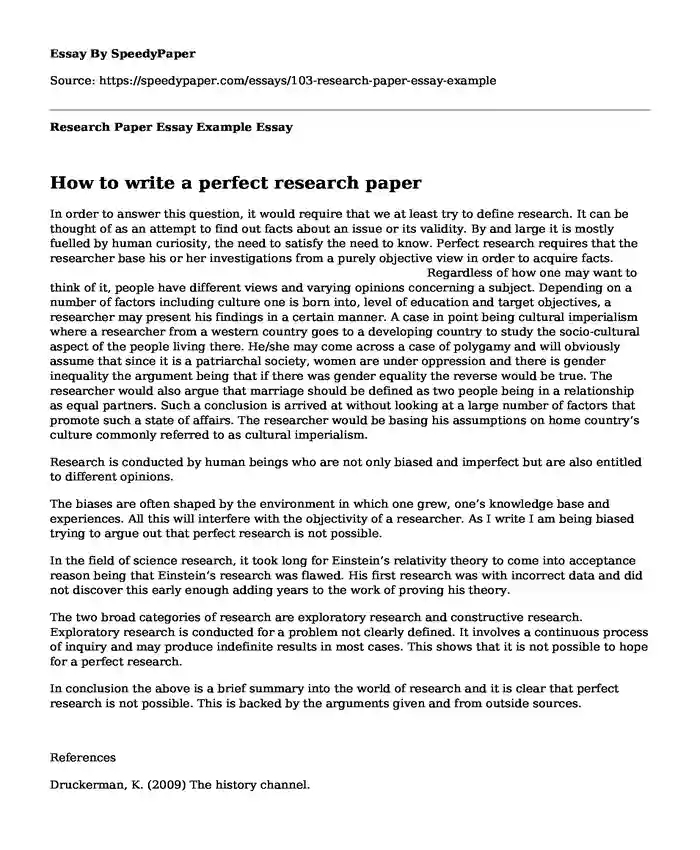How to write a perfect research paper
In order to answer this question, it would require that we at least try to define research. It can be thought of as an attempt to find out facts about an issue or its validity. By and large it is mostly fuelled by human curiosity, the need to satisfy the need to know. Perfect research requires that the researcher base his or her investigations from a purely objective view in order to acquire facts. Regardless of how one may want to think of it, people have different views and varying opinions concerning a subject. Depending on a number of factors including culture one is born into, level of education and target objectives, a researcher may present his findings in a certain manner. A case in point being cultural imperialism where a researcher from a western country goes to a developing country to study the socio-cultural aspect of the people living there. He/she may come across a case of polygamy and will obviously assume that since it is a patriarchal society, women are under oppression and there is gender inequality the argument being that if there was gender equality the reverse would be true. The researcher would also argue that marriage should be defined as two people being in a relationship as equal partners. Such a conclusion is arrived at without looking at a large number of factors that promote such a state of affairs. The researcher would be basing his assumptions on home country’s culture commonly referred to as cultural imperialism.
Research is conducted by human beings who are not only biased and imperfect but are also entitled to different opinions.
The biases are often shaped by the environment in which one grew, one’s knowledge base and experiences. All this will interfere with the objectivity of a researcher. As I write I am being biased trying to argue out that perfect research is not possible.
In the field of science research, it took long for Einstein’s relativity theory to come into acceptance reason being that Einstein’s research was flawed. His first research was with incorrect data and did not discover this early enough adding years to the work of proving his theory.
The two broad categories of research are exploratory research and constructive research. Exploratory research is conducted for a problem not clearly defined. It involves a continuous process of inquiry and may produce indefinite results in most cases. This shows that it is not possible to hope for a perfect research.
In conclusion the above is a brief summary into the world of research and it is clear that perfect research is not possible. This is backed by the arguments given and from outside sources.
References
Druckerman, K. (2009) The history channel.
Cite this page
Research Paper Essay Example. (2018, Mar 18). Retrieved from https://speedypaper.net/essays/103-research-paper-essay-example
Request Removal
If you are the original author of this essay and no longer wish to have it published on the SpeedyPaper website, please click below to request its removal:
- Free Essay Sample on Interdisciplinary Collaboration in Shared Governance
- Personal Work Goals Essay Samples
- Free Essay on How Technology Has Enhanced Education
- The Perfect Christmas Gift, Essay Example
- Free Essay about Reforms for Affordable Health Care
- Free Essay Sampe: Coke and Pepsi Financial Analysis
- Case Study- E-Freight Project by IATA. Free Essay
Popular categories





